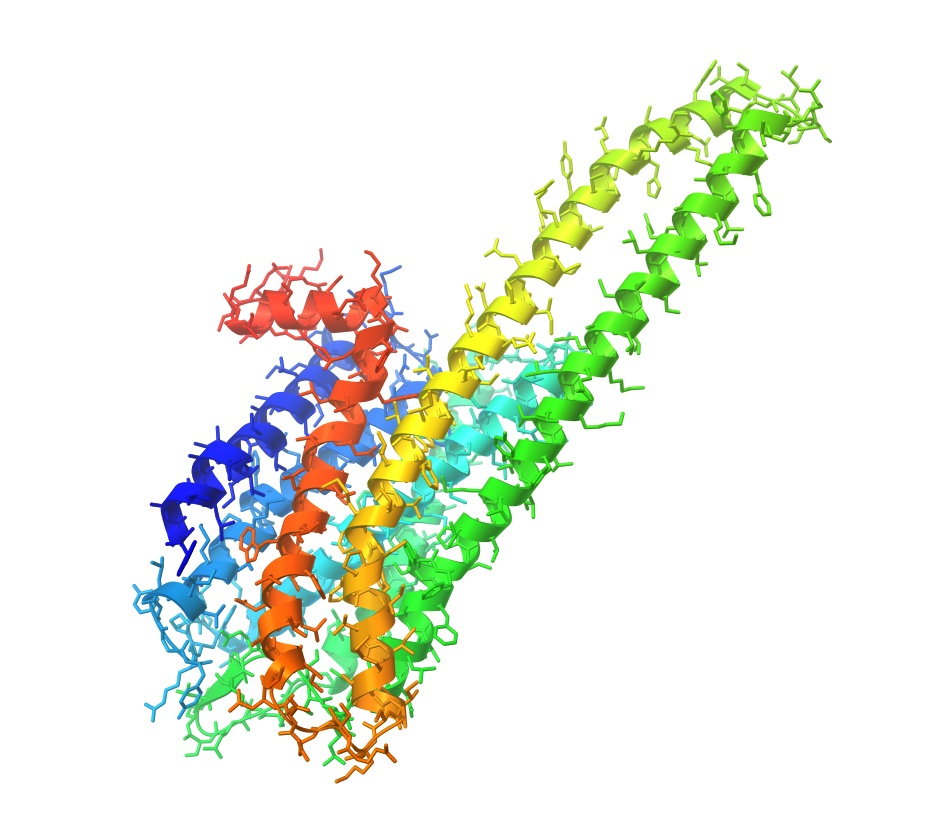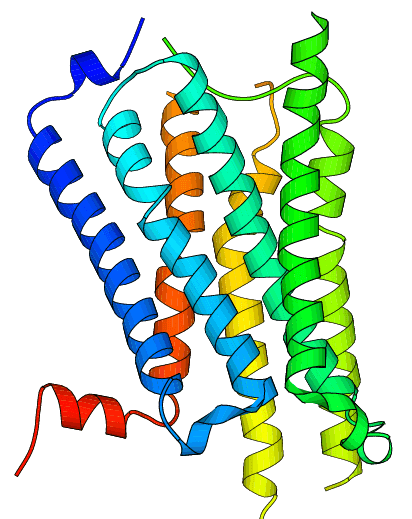
The continuing and growing interest in psychedelic drug research is bringing serotonin receptors to the forefront of interest for scientists as well as laypeople. There is much more to understanding serotonin receptors and psychedelics than just the well-known 5-HT2A receptor that is known to elicit the psychedelic effect.
PSR has published articles discussing how the entourage effect observed with cannabis compounds may also be at work with psychedelics. Because the entourage effect of psychedelics may involve more than 5-HT2A and the different compounds found in naturally occurring organisms like psychedelic mushrooms (aka magic mushrooms), it is helpful to look at the whole family of serotonin receptors for a better understanding.
Keep in mind the common thread that connects serotonin receptors and psychedelics. Not only do serotonin receptors have a high affinity for the neurotransmitter serotonin, but the chemical structure of many psychedelics is similar to serotonin. For example, Figure 1 shows the chemical structure of serotonin along with three psychedelic compounds. Therefore, understanding how serotonin receptors work is critical to understanding how psychedelic compounds work.

Figure 1: The chemical structures of serotonin, psilocybin, DMT, and LSD. Note the indoleamine structure in serotonin that is also present in the psychedelic compounds. This similarity is one reason some psychedelics have an affinity for serotonin receptors. Other reasons may include allosteric modulation and the entourage effect.
Serotonin Receptors are G Protein-Coupled Receptors
Serotonin receptors belong to a family known as GPCRs or G protein-coupled receptors.1 GPCRs are membrane proteins that are responsible for mediating most of the cellular responses to hormones and neurotransmitters. They are also involved in vision, smell, and taste.
GPCRs have a basic form consisting of seven membrane-spanning alpha-helices (Figure 2). The helices are separated by alternating sections of the receptor that form intracellular and extracellular loops.1 Although GPCRs share many similarities, each is unique in terms of the signaling pathways they use, other receptors with which they interact, and the regulatory processes they support.

Figure 2: A cartoon representation of the basic structure of a GPCR receptor showing the seven protein helices that span the cell membrane.2
The Importance of Allosteric Modulation
Researchers studying drug development often use GPCRs in conjunction with small molecules called allosteric modulators.3 These molecules do not bind to the primary binding site (aka the orthosteric site) on GPCRs, but rather an alternate binding site (the allosteric site). When this binding occurs, the receptor changes conformation (i.e. changes shape). This changes how the GPCR interacts with a different molecule (also called a ligand) at the orthosteric site.
An allosteric modulator comes in handy, for example, when binding a ligand directly to the orthosteric site causes unwanted side effects. Positive allosteric modulators (PAMs) increase the response of the receptor and negative allosteric modulators (NAMs) reduce responsiveness. There are also neutral allosteric modulators that bind to the allosteric site but have no effect on binding at the orthosteric site. These neutral allosteric molecules can be used when researchers want to block the allosteric site.
Getting to Know the 14 Serotonin Receptors
Here is a list of the known serotonin GPCRs along with some general information about each one.4,5
- 5-HT1A – This was the first serotonin receptor cloned and characterized by researchers. It is found densely populating the limbic areas in the brain, particularly in the hippocampus, lateral septum, cortices, and the dorsal and median raphe nuclei. The levels of 5-HT1A binding sites are almost non-existent in the cerebellum and basal ganglia. The 5-HT1A receptor may have roles in anxiety, the action of selective serotonin reuptake inhibitor (SSRI) drugs, schizophrenia, Parkinson’s disease, addiction, protection against ischemic brain damage.
- 5-HT1B – This receptor is found at high levels in the basal ganglia and low levels in the cerebral cortex, hypothalamus, amygdala, and dorsal horn of the spinal cord. Within neurons in the brain, 5-HT1B receptors are found on axon terminals. This receptor is being studied for its roles in aggression, learning, memory, addiction, and in the action of SSRI drugs.
- 5-HT1D – Compared to the rat and mouse, the expression of this receptor appears limited in humans. It has been detected in the trigeminal fibers in the spinal trigeminal tract and the brainstem in the human brain. The biggest claim to fame for 5-HT1D is its role as a target for the antimigraine drug sumatriptan and subsequent triptan drugs.
- 5-HT1E – This is an intriguing serotonin receptor because although it is expressed in humans and Guinea pigs, it has not been detected in rats or mice—these rodents don’t even have a gene for it. Another interesting feature is that 5-HT1E and 5-HT1B share approximately 60% of the DNA that codes for their transmembrane helices but the receptors retain distinct pharmacological properties. 5-HT1E is thought to be important for cognition and memory processes due to its abundant presence in the hippocampus, frontal cortex, and olfactory bulb, all key brain areas for these functions.
- 5-HT1F – Like 5-HT1D, this receptor is studied primarily for its importance in migraine therapies. 5-HT1F has the added advantage of being a target for newer migraine drugs that have fewer side effects (e.g., coronary vasoconstriction) than drugs like sumatriptan. Using radioactive sumatriptan in post mortem human brains, researchers have found expression of 5-HT1F in the globus pallidus, substantia nigra (brainstem), and the spinal cord.
- 5-HT2A – In 1988, Vollenweider et al. were the first to publish data indicating that the 5-HT2A receptor was the key site for the action of hallucinogenic drugs in humans.6 This receptor is found in high levels across many species in the forebrain, particularly the cortices, caudate nucleus, nucleus accumbens, olfactory tubercle, and hippocampus. In peripheral areas of the body 5-HT2A receptors are found in cardiovascular and smooth muscle tissues. In addition to eliciting hallucinogenic effects, 5-HT2A is of great interest to researchers studying antipsychotic drugs.
- 5-HT2B – This receptor has the distinction of being the only serotonin receptor that is necessary for life. The primary function of 5-HT2B is coordinating the proper formation of critical structures in the brain and heart during development. 5-HT2B Knockout mice, which don’t have the gene for 5-HT2B, are lethal and display severe embryonic defects. In mammals, 5-HT2B is expressed primarily in the liver, kidneys, fundus of the stomach, and gut. There is a moderate expression in the lungs and cardiovascular tissues. Interestingly, there is only weak, limited expression in the brain. Scientists study 5-HT2B because it may have important roles in drug abuse and hearing loss.
- 5-HT2C – There is considerable interest in studying the 5-HT2C receptor for several reasons. It is believed to play a role in drug abuse, the action of SSRIs, and obesity. Also, 5-HT2C is highly expressed in the amygdala, the area of the brain that mediates feelings of anxiety. According to leading psychedelic researcher Dr. David Nichols, all known psychedelics are agonists at 5-HT2A and -HT2C.7 Other areas of the brain with a high density of 5-HT2C include choroid plexus, cortex, basal ganglia, thalamus, and hippocampus.
- 5-HT3 – Unique among the serotonin receptors is 5-HT3. It is the only serotonin receptor that is not a GPCR. 5-HT3 is a ligand-gated ion channel.3 This means that when it is activated by agonist binding, channels open allowing ions (such as sodium, potassium, and calcium) to flow in and out of the cell. With neuron cells, this ion flow causes an excitatory response. These receptors are found in both the central (CNS) and peripheral nervous systems (PNS), both pre- and postsynaptically (i.e., the receptor both sends and receives signals). The 5-HT3 receptor is most notably studied for treating nausea and vomiting and irritable bowel syndrome (IBS).
- 5-HT4 – In the human CNS, this receptor is expressed in the basal ganglia, cortex, hippocampus, and subtantia nigra. In the PNS, 5-HT4 is particularly important in gastrointestinal function. Similar to 5-HT3, therapeutic drugs target 5-HT4 for treating constipation and constipation-predominant IBS. Interestingly, 5-HT4 specific agonists can enhance learning and memory in animal models.
- 5-HT5A – Of the two receptors in the 5-HT5 family, only 5-HT5A has been described in humans (it is also present in rodents). The receptor is expressed broadly but has high densities in the olfactory bulb, neocortex, and medial habenula. The expression of 5-HT5A mRNA (the code for making proteins) in human brain sections was found primarily in the cerebral cortex, hippocampus, cerebellum, various layers of the neocortex. These findings correlate with the concept of 5-HT5A involvement in higher cortical and limbic functions. 5-HT5 is perhaps the least studied serotonin receptor family and not much is known about their function. These receptors may have a role in controlling circadian rhythms, mood, and cognitive functions. From this, it has been proposed that agonist drugs may be useful in treating sleep disturbances and schizophrenia.
- 5-HT5B – To date, this receptor is only found in rodents. It appears that 5-HT2B is receiving less research attention that its 5A counterpart. See 5-HT5A for more information on the 5-HT5 receptor family.
- 5-HT6 – This receptor is found almost exclusively in the CNS in mammals. The highest concentrations of 5-HT6 are in the striatum, nucleus accumbens, cortex, olfactory tubercle, hippocampus, thalamus, amygdala, hypothalamus, and cerebellum. Because it is primarily confined to the CNS, scientists suspect 5-HT6 functions in higher cognitive processes. Research on this receptor is constrained due to the lack of selective agonists.
- 5-HT7 – This is the most recently identified serotonin receptor. In the human CNS, the receptor is expressed in the hypothalamus, thalamus, hippocampus, and cortex. In the human PNS, it is found in blood vessels (where it causes relaxation of the smooth muscle) and the smooth muscle of the colon (where, interestingly, it doesn’t seem to be involved in muscle relaxation). Again, the lack of selective agonists for this receptor has constrained research efforts. The difficulty in identifying receptor-specific agonists is compounded by agonists having a high affinity for 5-HT7 also having high agonist activity for 5-HT1A and other receptors. Despite these drawbacks, researchers believe 5-HT7 is involved in regulating sleep, circadian rhythms, and mood.
Continuing Research on Serotonin Receptors
It is clear that there are still many mysteries surrounding the structure and function of serotonin receptors. Further research into their structure, function, and allosteric modulators would help in understanding how psychedelic drugs work, including the influence of the entourage effect. From this, researchers could make formulations with precise amounts of specific compounds. Scientists have only started to scratch the surface to reveal the capabilities and potential of psychedelic compounds.
